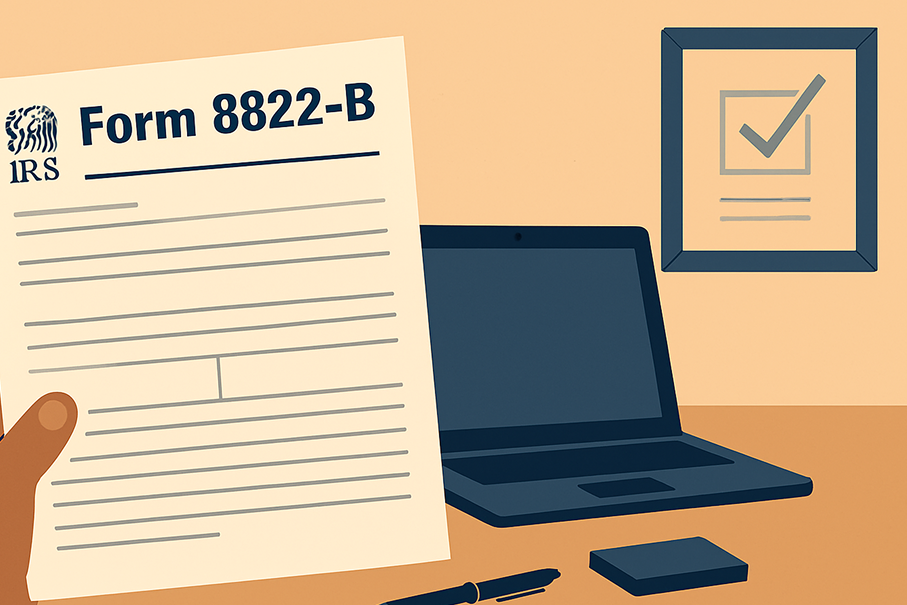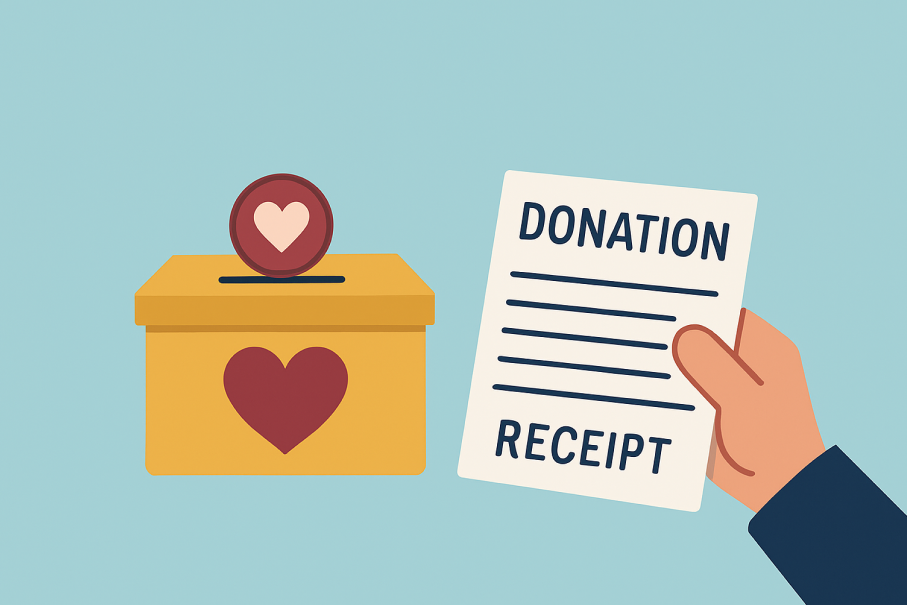When your nonprofit changes who’s in charge—or where your mail goes—you need to let the IRS know. That’s where IRS Form 8822B comes in.
While it may not be the most talked-about document in nonprofit finance, failing to file the 8822-B form could lead to missed notices, delayed refunds, or even penalties. In this post, we’ll explain exactly what Form 8822-B is, who needs to file it, when to file it, and how to stay compliant with minimal stress.
What Is Form 8822B?
Form 8822-B is an IRS form used to update your nonprofit’s:
- Mailing address
- Business location
- Responsible party (such as a new Executive Director, CFO, or Board Treasurer)
This form ensures the IRS sends important notices (like tax letters, refund checks, or compliance alerts) to the correct person at the correct address.
Who Needs to File IRS Form 8822-B?
Your nonprofit must file Form 8822-B if:
- You change your mailing address
- Business location
- You appoint a new responsible party—someone who controls or manages your organization’s funds and assets
Examples:
- Your nonprofit moved to a new office or coworking space
- You hired a new Executive Director
- Your Treasurer stepped down and someone new took over financial oversight
Even if your board rotates annually, if the new responsible party will be the one receiving or acting on IRS correspondence, you should file.
When Do You Need to File the 8822-B Form?
According to IRS instructions, you must file within 60 days of the change.
Missing this deadline doesn’t automatically trigger a penalty—but it increases the risk of lost notices, missed deadlines, and confusion with your nonprofit’s EIN.
How to Fill Out Form 8822-B (Instructions)
Here’s a quick breakdown of what you’ll need:
Basic Information
- Legal name of your nonprofit
- Employer Identification Number (EIN)
- Old and new address
Responsible Party Info
- Full legal name
- Social Security Number (SSN) or Individual Taxpayer Identification Number (ITIN)
Signature
- Must be signed by an authorized officer (e.g., President, Treasurer, Executive Director)
Once completed, mail the form to the appropriate IRS address listed in the official 8822-B instructions.
What Happens If You Don’t File?
If you forget to file the 8822-B:
- IRS mail might go to the wrong person or location
- Refunds or credits could be delayed
- You might miss compliance deadlines, triggering late fees or penalties
For nonprofits that rely on accurate financial tracking, skipping this simple step can lead to big headaches.
Pro Tip: Use Crowded to Keep Your Org Compliant
Crowded helps nonprofits, associations, and other organizations streamline finances, track expenses, and stay organized—with transparency and IRS-readiness built in.
When leadership or address changes happen, Crowded makes it easy to:
-
Export the details you need to complete Form 8822-B
-
Track who has access to funds
-
Keep your accounting and compliance team in sync
-
Submit the change through Crowded—we’ll handle the IRS filing and mailing for you
Final Thoughts
Form 8822-B may seem like a small administrative task, but it plays a big role in keeping your nonprofit compliant and connected to the IRS.
By staying on top of small forms like these, you protect your organization’s good standing and make life easier for everyone involved.
Your questions, answered.
What does the IRS consider a “responsible party” on Form 8822-B?
The IRS defines a responsible party as the individual who has ultimate control over the organization’s finances or assets. For nonprofits, this is typically the Executive Director, CFO, or Board Treasurer—not necessarily the person who filed the 990 or handles day-to-day admin tasks.
Do I need to file 8822-B if we updated our address on the 990?
Yes. Filing your new address on the 990 alone does not update IRS records for official correspondence. Form 8822-B is the only IRS-recognized method for formally updating your mailing address or responsible party.
Where do I send Form 8822-B?
The mailing address for Form 8822-B depends on your organization’s location. The IRS provides separate submission addresses for entities in different states. You can find the current mailing info in the official 8822-B instructions.
Can I update multiple entities with one 8822-B form?
No. You must file a separate 8822-B for each EIN. If your organization has multiple legal entities (e.g., a fiscal sponsor and a project under it), each must file individually using their own tax ID number.
How do I know if my 8822-B was processed?
The IRS does not send confirmation for 8822-B submissions. To verify the update was received, you’ll need to call the IRS Exempt Organizations line or check whether future correspondence is sent to the updated address.
Can I file Form 8822-B late?
Yes, you can still file even after the 60-day deadline. While there’s no formal penalty, delays increase the risk of missed tax notices or miscommunication from the IRS.








